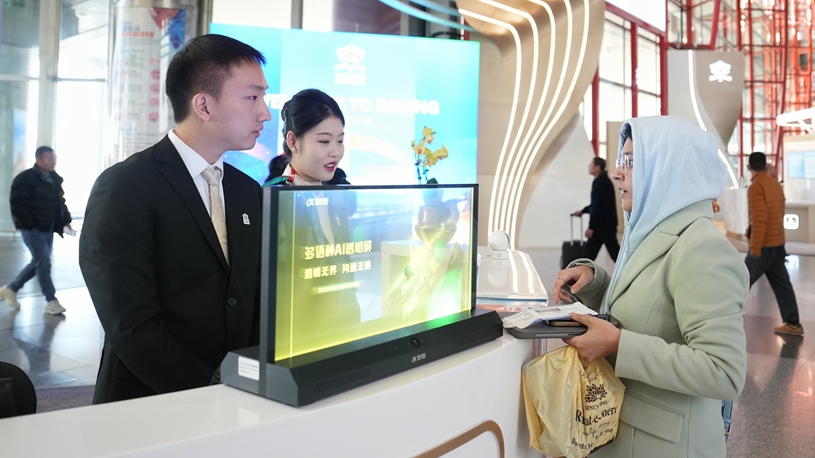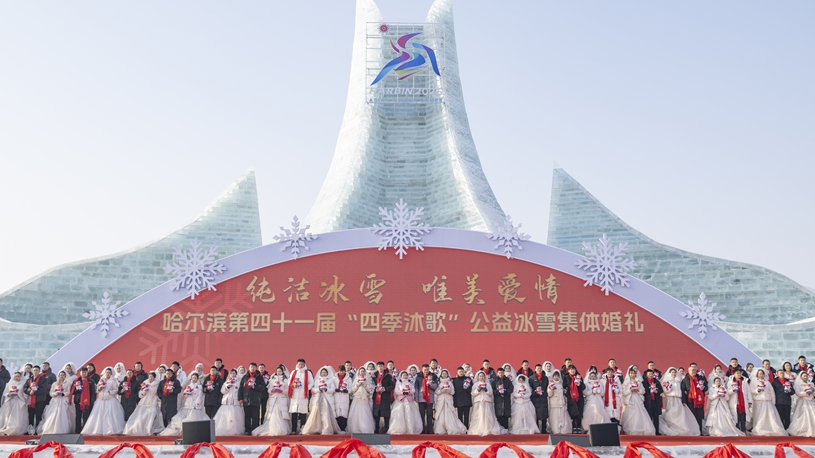In recent years, Chinese companies have played a pivotal role in the UAE's clean energy development, helping optimize its energy mix and serving as a model of China-UAE green collaboration. From large-scale solar projects rising in the desert to the first wind energy demonstration projects, Chinese technology and expertise have been integral to the UAE's energy transition.
by Xinhua writers Wen Xinnian, Zhao Danliang
DUBAI, Jan. 9 (Xinhua) -- When you drive south from Dubai toward the Mohammed bin Rashid Al Maktoum Solar Park, a dazzling light sphere resembling an artificial sun comes into view from over 20 km away in the desert.
This extraordinary sight is the 263-meter-high solar power tower, the world's tallest of its kind, built by Shanghai Electric Group as part of a concentrated solar power (CSP) and photovoltaic (PV) project.
Workers poetically describe their mission: "We are light gatherers, building a tower from grains of sand, turning hopes into rivers of energy, and capturing the sun to illuminate countless homes at night."
China is harnessing solar energy through advanced technology to meet clean energy needs of the United Arab Emirates (UAE).
Despite its vast oil reserves, the UAE has remained committed to optimizing its energy structure and advancing a clean energy transition. The UAE Energy Strategy 2050 aims for carbon neutrality by mid-century, necessitating significant investments in renewable energy sources like solar and wind power. As a global leader in renewable energy technology, China has become a natural partner in this ambitious endeavor.
In recent years, Chinese companies have played a pivotal role in the UAE's clean energy development, helping optimize its energy mix and serving as a model of China-UAE green collaboration. From large-scale solar projects rising in the desert to the first wind energy demonstration projects, Chinese technology and expertise have been integral to the UAE's energy transition.
One of the flagship achievements is the CSP-PV hybrid project undertaken by Shanghai Electric Group in the Dubai desert. Fully operational since December 2023, the project has already generated over 3.6 billion kilowatt-hours of electricity, providing stable green power for 320,000 local households and reducing carbon dioxide emissions by more than 1.6 million tons annually.
This project showcases the technological strengths of CSP. Unlike traditional PV plants, which cannot generate power under low sunlight conditions, CSP uses advanced thermal storage systems to enable power generation around the clock.
Another landmark project is the Al Dhafra Solar PV Plant in Abu Dhabi, built by China Machinery Engineering Corporation. Covering 21 square km, this facility is the world's largest single-site solar PV plant, with an installed capacity of 2.1 gigawatts. Operational since June 2023, it generates enough electricity to power 200,000 households annually while reducing carbon emissions by 2.4 million tons each year. During its construction, the plant created over 5,000 local jobs.
Project manager Che Ming'an highlighted the plant's use of cutting-edge PV technology, with solar panel mounts capable of tracking the sun's trajectory to maximize energy conversion. Nearly all equipment, from PV modules to cleaning robots and unattended substations, was sourced from China, exemplifying successful green energy collaboration under the Belt and Road Initiative (BRI).
Beyond solar, Chinese enterprises are also venturing into wind energy in the UAE. In May 2023, PowerChina completed the UAE's first wind power demonstration project.
The project, which spans complex terrains including islands, deserts and mountains, covers a distance of over 700 km. The project generates enough electricity annually to meet the needs of over 23,000 households while reducing carbon emissions by 120,000 tons.
Peng Gang, general manager of PowerChina's Middle East and North Africa regional headquarters, said that the wind power demonstration project proved the economic feasibility of wind energy in the UAE, highlighting China's leading position in the field.
These clean energy initiatives mirror deepening cooperation between China and the UAE in energy transition and sustainable development. Leveraging their technological, equipment and management expertise, Chinese companies are pivotal to the UAE's energy ambition, while offering Chinese solutions to global climate challenges.
"Promoting energy conservation and emissions reduction is not only a corporate social responsibility but also a shared mission for humanity," said Zhao Hui, project manager of Shanghai Electric's Dubai CSP-PV project. "Chinese enterprises will continue to drive clean energy development through multilateral collaboration, offering more possibilities for global carbon neutrality."■












